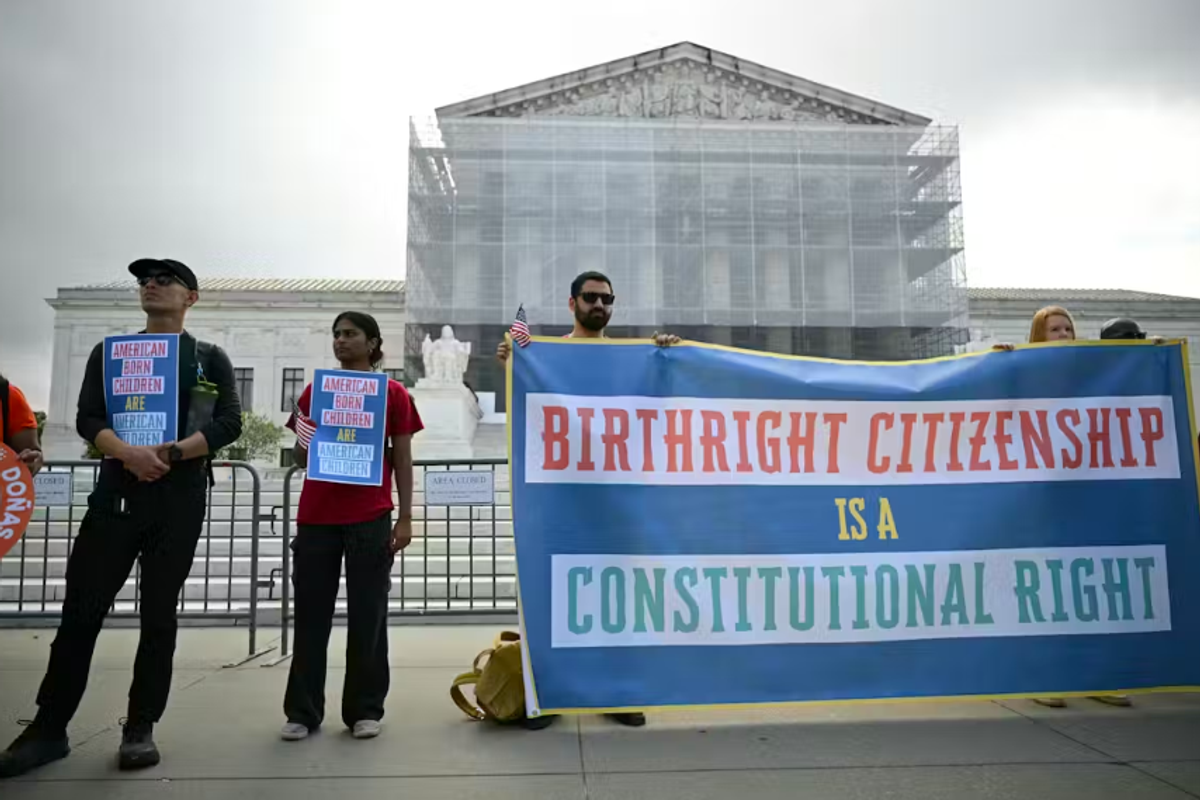Eberhard is the director of democracy and climate policy at the Sightline Institute, a progressive think tank focused on the Pacific Northwest. Last fall it published her book, "Becoming a Democracy: How we can fix the electoral college, gerrymandering, and our elections."
One person, one vote. That's the dream of American democracy — and, sadly, the myth. The most powerful American lawmaking body patently violates that principle.
The United States Senate was explicitly designed to be undemocratic. It represents states, not people. Population-wise, some states are the size of large cities, others the size of large countries. If Wyoming were a city, it wouldn't even make the list of the nation's most populous 25 municipalities. But more people live in California than either Canada or Australia. Wyoming and California each get two senators, meaning some voters have 70 times more Senate representation.
Half of the nation's people have only 18 senators representing them, but there are 52 senators from the 26 smallest states, home to just 18 percent of Americans.
The skew isn't random. White Americans have, on average, nearly twice as much representation in the Senate as Black and Hispanic Americans. How can this be? The largest states — California, Texas, Florida and New York -- are among the most racially and ethnically diverse. Most of the smallest ones — Wyoming, North Dakota, South Dakota, Maine and Vermont -- are homogenous. Seven of the 10 least populated states are also among the whitest top 10.
It matters. Wyoming, where 89 percent of the people are white, receives 50 times more in federal expenditures than California, which is only 40 percent white. Vermont's Rutland County receives about $2,500 per person in federal largesse, while the folks in New York's similarly-sized Washington County get $600. (To remind: Vermont's 600,000 people, 94 percent of whom are white, have two senators. So do the 19 million New Yorkers, 58 percent of them white.)
Unlike many other countries — with undemocratic upper houses of the national legislature that are less powerful than the lower, "people's houses" — our Senate exerts near-total control over federal legislating: The Senate version of a bill prevails over the House-passed version, at least partially, 82 percent of the time. And the Senate is the exclusive gatekeeper for all treaties and nominations, including the Supreme Court.
The Senate should represent people, not states. But to simply mandate equal representation, we'd have to chuck the whole Constitution. That's not happening. Ours is the most difficult to amend or update of any such charter in the world. Not only that, but Article V guards the Senate against alteration, saying each state must agree before being "deprived of its equal suffrage in the Senate."
The only way to make the Senate more representative within the constraints of the Constitution is to right-size the states. And the Constitution gives us four options to adjust for dramatic state population disparities.
Add states. Nearly two and a half centuries after American revolutionaries fought for representation, more than 4 million American citizens remain deprived of Senate representation — the people of Puerto Rico, Guam, the U.S. Virgin Islands, the Northern Mariana Islands and Washington, D.C. Offering statehood would be fair to their citizens. If all the potential new states have majorities of people of color, their senators would help balance out the Senate's disproportionate whiteness.
Subdivide states. Congress could give blanket permission for any state with more than 13 times the population of the smallest state (the original ratio between the largest and smallest colonies) to break into smaller states, so long as no resulting state is smaller than the smallest state. Thirteen times the population of Wyoming, now the smallest state at 580,000 people) is 7.5 million, which would now comfortably accommodate more than three new states from a subdivided Texas and more than five states spawned by California.
Combine states. Congress could give blanket permission for any state with less than 1 percent of the national population to join an adjacent state or part thereof. Right now, that would apply to the 21 states that are each home to fewer than 3.3 million residents. Several sit side-by-side, creating an opportunity to join together. They'd still be small states. Maine, New Hampshire and Vermont combine for 3.3 million people; there are altogether 3.4 million in Idaho, Montana and Wyoming; and merging Nebraska and the Dakotas would yield a state of 3.6 million.
Redraw the whole map. If we really want to dream, imagine Congress grants all states the opportunity to participate in a collective redrawing of boundaries. States would opt in by the next census, at which time an independent redistricting commission would take into account history, culture and communities of interest to set state lines that make more sense to the people living there and that result in more equally sized states — say, all within a range of 1 million to 5 million people.
States resulting from this process would have more unified sets of values and policy priorities, and their residents would feel better represented by their leadership. For example, many residents of eastern Oregon are already eager to join Idaho, which matches them in geography, economy and culture better than coastal Oregon.
Some political magic would be required for right-sizing the states. But all these options could be accomplished without a constitutional amendment. They require building the right alignment of political movements and enough momentum to tip a series of ordinary majority votes in state legislatures, the House and the Senate.
It's not an easy path, but not impossible. A first step is to raise awareness about the lopsided power held by the Senate, especially during the push for other reforms such as removing the filibuster — the very thing, ironically, standing in the way of D.C statehood and a Senate that looks a little more like America.



















